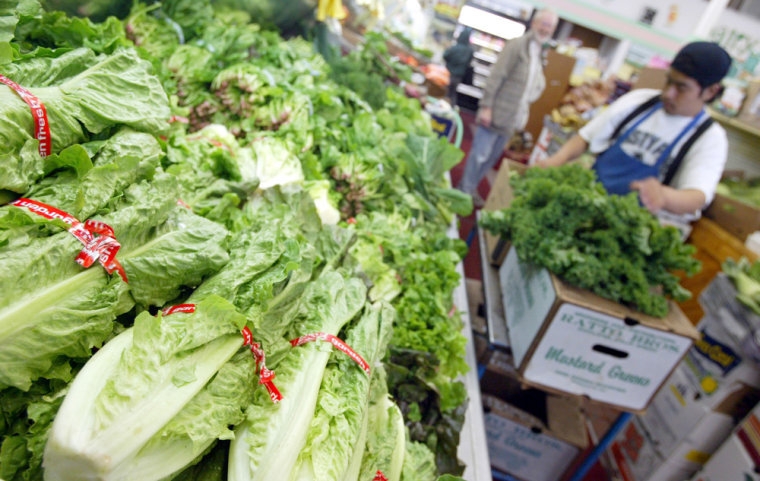The new Dietary Guidelines for Americans, released in January 2005, issue a major challenge regarding vegetables. The average adult needs to boost their consumption of dark green vegetables by 200 to 300 percent. We currently eat so little of these foods that our health is suffering.
The latest dietary recommendations suggest that most adults should eat three cups of dark green vegetables a week. To reach this amount, you could have a half-cup serving almost every day, or larger servings several times a week.
If that seems like a lot of vegetables, that’s because Americans seldom eat them. One consequence of this poor eating habit is that American diets tend to be low in potassium and magnesium. Dark green vegetables provide these minerals that are linked with healthy levels of blood pressure and blood sugar.
Not only do we seldom eat them, however, many of us walk into grocery stores and never notice, or even recognize, many of the dark green vegetables there. Next time you’re in a grocery store, go on a “green vegetable” hunt, looking for these nutritious, delicious treasures.
Romaine lettuce – and even darker green leafy vegetables like spinach, Swiss chard, kale, collard greens, mustard greens and turnip greens – contain beta-carotene as well as the carotenoid cousins called lutein and zeaxanthin. Beta-carotene, lutein and zeaxanthin are all powerful antioxidants that seem to play a role in blocking early stages in the development of cancer.
High in folate
Some studies even link them with a lower risk of breast, lung and skin cancers. In addition, lutein seems to help slow the development of age-related macular degeneration (AMD), a cause of age-related blindness.
These same dark greens can also supply a significant amount of folate. Folate is a B vitamin that promotes heart health and helps prevent certain birth defects. Folate is also necessary for DNA duplication and repair. Without repair, damaged cells can develop into cancer.
The importance of folate should not be underestimated. Even after considering the presence of other cancer-fighting nutrients, several large studies show that the risk of colon polyps, which are the source of most colon cancers, is 30 to 40 percent lower in people with a high folate intake compared to those with diets low in folate.
Research also suggests that diets low in folate may increase the risk of cancers of the breast (particularly among women who drink alcohol), cervix and lung.
Certain dark green vegetables offer another advantage. Watercress, arugula, bok choy, broccoli and kale are all members of the cruciferous family. These vegetables supply phytochemicals such as indoles that help stop cancer before it starts.
How to serve them
These phytochemicals block enzymes that activate carcinogens and boost enzymes that detoxify them. Other antioxidant phytochemicals in these green cruciferous veggies help prevent and repair DNA damage that can lead to cancer. They also seem to interrupt the growth of cancer cells.
If you haven’t eaten many of these dark green vegetables before, you may not know how to serve them. Perk up salads or sandwiches with small tender leaves. Add greens with larger, tougher leaves to soups. You can quickly stir-fry many of these greens in a dash of canola or olive oil with some garlic, onion, or ginger.
Check your grocery store for pamphlets with more ideas for preparing this kind of produce, or look at cookbooks. Or get fresh ideas at your desk: Go to the website of the American Institute for Cancer Research and click on Recipe Corner. Type in the name of a vegetable for some tasty recipes to try. The website www.5aday.com offers a similar service.
